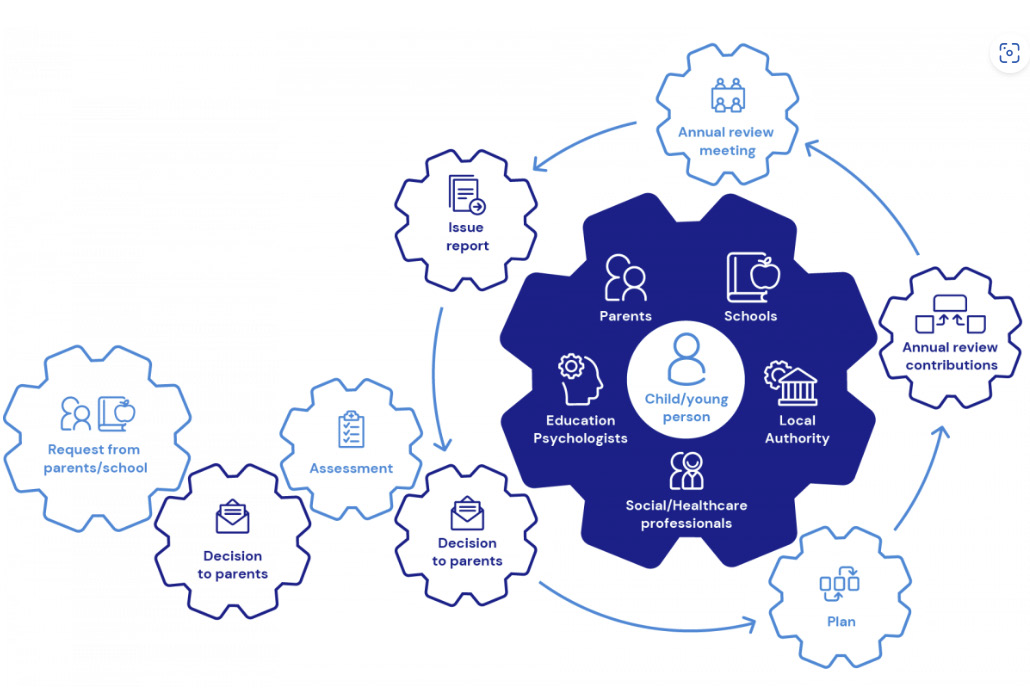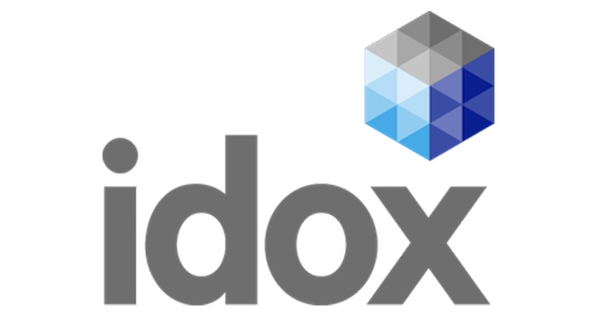SEND reforms: the power of digitisation
The digitisation of Education, Health, and Care Plans (EHCPs) is here, with the Department for Education in England confirming its plans to implement it as part of the special educational needs and disabilities (SEND) and alternative provision (AP) reforms.
“We think the case is clear for all SEND services to move to digital systems for EHCPs”
In reality, there’s a lot to think about when planning to digitise a national process that works on a local level and some organisations such as Nasen (National Association for Special Educational Needs) would like to see a swifter plan to digitisation than is currently being proposed.
Idox has been at the forefront of digitising EHC processes since 2017, collaborating with local authorities and their SEND communities, with our EHC Hub. They tell us about greater efficiencies and productivity, reduced bureaucracy and importantly, greater transparency that drives better relationships with their families.
We know that technology brings benefits to managing EHCP processes. With the number of children and young people with EHC plans up by 9%2 from 2022, it is now more important than ever to streamline processes and realise the benefits of digitisation.
A logical approach to digitising EHCPs is to use a system specifically designed for that purpose, ensuring equal accessibility for all stakeholders. This may mean that the best tool for the job is not already available within the local authority.
We are not like other solution providers, who offer multi-purpose, configurable software platforms and ask each local authority to plan and build EHC processes from scratch.
We’re different. We have chosen to make SEND our business!
Our passionate teams work closely with local authorities and their stakeholders to continually evolve our software, based on their ever-changing priorities and challenges.
Crucially, we talk to families. Through our engagement with parent/carer groups across England, we have been able to learn first-hand what families need, and want, from digitisation. That’s what has enabled us to build our market-leading EHC Hub, that’s designed just for EHCPs.
“We’ve wrestled for years with how we can improve transparency, as this process can be very overwhelming and challenging for parents. Being able to access all the information about their child, see professional reports at the earliest opportunity and for them to be able to see the EHCP being crafted is fantastic. It creates a far more collaborative process, with better outcomes for all involved.”
Geoff Catterall,
Head of Service – SEN and Complex Needs Salford City Council
The power of digitisation
Here are some of the key things you should consider as part of your digitisation journey.
Use digitisation as a vehicle to drive change
In our experience, digitisation is more than implementing a piece of technology in isolation. Software alone isn’t going to solve all the challenges that managing these processes raises. Technology must be part of a broader conversation about transforming ways of working.
Real transformation can be daunting, and engaging all stakeholders from the outset is key. Those who put in place a measured and staged approach see the benefits of digitisation realised more quickly.
We’ve seen our customers successfully use the implementation of the EHC Hub as a tool to drive real change. Digitising processes doesn’t mean digitising existing problems.
Our experienced implementation specialists work directly with all stakeholders to map and understand existing processes. An important part of this process is bringing our learning from other local authorities and connecting managers and leaders with peers who have successfully transformed services using our Hub as a catalyst.
For a portal or piece of software to be successful, it must bring benefits to all users, and you can only offer these by having a real understanding of their needs in the first place
Transparency means transparency
Implementing EHCP software can, and should, bring a new level of transparency by giving everyone timely access to processes, documents and details.
But what does that mean? You need to consider the implications of transparency for families and all stakeholders involved, not just the local authority.
Resetting relationships with a commitment to openness can entail a significant cultural shift. Transparency can also expose any gaps in the process, highlight the level of teamwork or lack thereof, and identify any delays. However, according to our customers, the benefits far outweigh the perceived risks.
Our Hub provides real-time information to all stakeholders involved in each case. It offers access to advice reports and case-specific statutory timeframes in a way that families, in particular, have not experienced before. It is important, that from the start of any digitisation project, everyone is onboard with this and is committed to change.
Who needs to know what and when?
There is an opportunity to look in detail at the need to integrate systems so that data can be shared. It is crucial to determine who needs access to what, and why? Integration should be proportionate, necessary, and aligned with the goals of supporting children and young people.
Let’s take the needs assessment process as an example: Who should be involved? Who is responsible for providing information? When can we expect that information? What are we sharing with whom? While technical integration often assumes a one-size-fits-all approach
to data sharing, it’s important to assess if it’s appropriate for everyone to have full visibility of a social care or a CAHMS assessment. Do we need that level of detail in the SEND team? How does the young person feel about their information being shared with everyone?
Our EHC Hub enables true collaboration and the sharing of information for EHCP’s which goes beyond the technical boundaries of a local authority’s case management system. But it is specific and controlled. Access to a case and its data is considered on a case-by-case basis
Access is more than providing login details
Providing access to those working to contribute to the process isn’t just about a log-in and password. You need to ensure that the platform is going to support families.
Access should also mean that families understand the information they have access to, and how it supports the process. It should offer guidance and context on what they’re looking at on the screen, rather than just focussing on the appearance or presentation of the information.
Take the time to engage with your specific users and understand their individual needs. Listen to how they find working with online tools and use their feedback to evolve your software. Nurture their engagement by demonstrating continuous improvement to their online experience.
This is why we speak to our customers’ customers. We will soon be launching our Hub redesign and demonstrating how our conversations with parent/carer groups across England this year has directly shaped our latest version.
A digital EHCP standardises a template, not the content
Digital EHCPs and a standardised template for all local Authorities is on the agenda as part of the Government’s Improvement Plan for SEND.
This does not mean standardising outcomes or provision with pre-prescribed or blueprinted content. It simply refers to a standardised format for the document. This means that no matter which local authority issues the EHCP, the format will be recognisable and consistent across England.
We’ve been working with a consistent template with our customers since 2017. Many of our existing customers are already realising the benefits of working with a standardised EHCP template. This can be particularly helpful for families who may move across local authorities’ boundaries, and to local authorities themselves, as they take on a child’s EHCP when they move into the area.
Portals don’t write plans!
Our Hub removes a lot of the bureaucracy associated with statutory process. However, despite all our innovation, it does not write plans for you!
Our software automates much of the manual processes involved in requesting input from multiple stakeholders and eliminates the need for a case worker to manually copy and paste content from multiple reports into a draft EHCP template.
We provide a great starting point for plan writers, ensuring that all key advice is incorporated into the draft document. However, there can be a misconception that the portal writes the plan for the local authority.
The time efficiencies provided by our automation mean that front-line staff should have more time to shape and develop an EHCP that supports the individual needs of children and young people. It is certainly not a one-size-fits-all approach!
Empower Settings and SENCOs to succeed
Settings are supporting more and more children and young people with SEND, and they directly manage the annual review process for those who have a statutory EHCP. They play a crucial role in these statutory processes. So, how will you involve them to ensure they feel supported and understand how to maximise the benefits of a platform like the EHC Hub?
But, before you train people on how to run a process online, are you sure they are clear what the process is in the first place? Our Hub’s unique EHCP review process has been designed to drive consistency and support SENCOs to run quality, evidence-based reviews that engage all stakeholders. We support local authorities by using our Hub’s implementation and training processes as an opportunity to engage settings and revisit what a good EHCP review process looks like. Once implemented, our technology is there on an ongoing basis to support SENCOs and reinforce good processes.
Other portals and platforms are often procured based on the benefits to the local authority: how can the software help manage increasing caseloads and challenging statutory timeframes? This, of course is key, but why can’t it offer the same to Settings? Why can’t we offer the same time-saving benefits and caseload management tools to support our SENCOs with their increasing workloads?
“Families are able to provide their views and the views of their children in the same way. Our teams previously had to manually cut and paste content from multiple reports or documents to create a draft plan.”
Laura Meynell,
SEN Service Manager
Southend on Sea Borough Council
Communication! Communication! Communication!
When we talk to families who are going through, or have been through, one of the statutory processes, one of the biggest concerns is a lack of communication.
We see first-hand the pressure that a local authority is under to complete the statutory assessment and planning process within 20 weeks. However, if you are a parent/carer who has been concerned about your child for years prior to this statutory process, 20 weeks can seem a very long time.
When considering a portal or software platform for SEND, you need to ensure that it directly addresses this issue. Our Hub provides real-time alerts and notifications to families, and all other stakeholders. Everyone involved in the case is notified as soon as
a decision is made, for example, or when a case has progressed to the next stage. There is no delay, and communications are consistent and timely.
Always in the know: What should happen next and when?
In addition to the automated notification that alerts families that there is an update on the Hub for them to view, they can also see what should happen next, and when. Families tell us that this is a game-changer.
Most local authorities will have a generic process map on the websites or Local Offer pages that illustrates the statutory EHC process. Though most families will struggle to relate this to their own case and journey. The Hub provides full visibility of the statutory timeframes and how they relate to their specific case. When can they expect the decision to assess? Or when should they expect a draft EHCP following the decision to issue?
Busy parent/carers who use our Hub tell us that they no longer need to find the time to call the local authority during working hours, hoping to speak to someone who is familiar with their case. They can see everything they need online, at a time when it suits them.
EHC Hub
We truly believe that genuine transparency and a seamless digital experience are paramount in supporting children and young people with SEND.
EHC Hub embodies this ethos by centralising all essential information in one accessible location and enables seamless collaboration among parents/carers, educators, healthcare professionals, and local authorities. It embraces the principles of the SEND Code of Practice 2015, creating a digital plan that supports every child’s unique situation.




